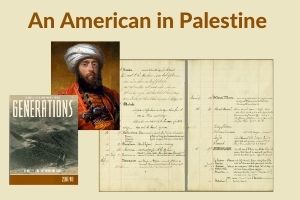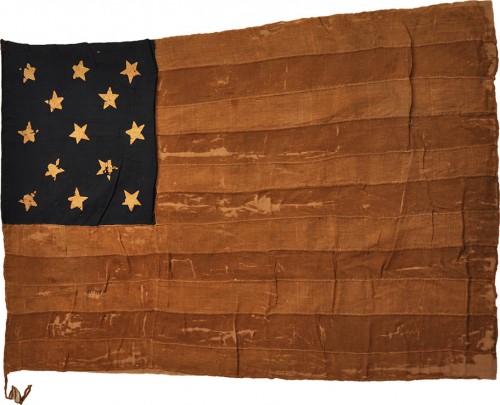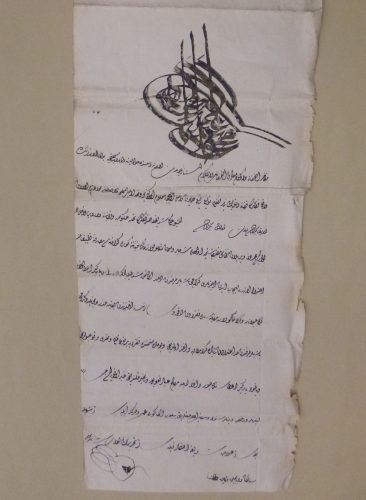An American in Palestine 2

Mendes I. Cohen Tours the Holy Land Part II: An American Abroad
Written by Dr. Deb Weiner. Originally published in Generations 2007-2008: Maryland and Israel.

Cohen set sail from New York to Liverpool in October 1829 and traveled through England, France, Switzerland, Italy, Turkey, Syria, Palestine, Egypt, Bulgaria, Moldavia, Russia, Poland, Austria, and Germany before returning to the United States in August 1835. As scion of a wealthy family during an age when few Americans traveled overseas, he had access to top U.S. officials abroad and, through them, to the highest levels of European society. He hobnobbed with Europe’s Jewish elite, becoming friendly with the Rothschild family and attending lavish parties at their home. Everywhere he went, he visited synagogues and made contact with local Jewish communities. He also toured the great cathedrals of Europe with the avid interest of a well-educated tourist.[i]
While Cohen was thoroughly comfortable in almost any social situation, as an American, he looked askance at European aristocracy. After describing a ceremony at Notre Dame involving the French king and his court, he concluded in a letter to his brothers, “A more splendid pageant I never saw . . . which to a genuine Republican a greater piece of nonsense & more unmeaning act perhaps could not be displayed & makes one the more firm in simple & unostentatious principles.”[ii]
Cohen’s American patriotism continued to influence his perceptions after he left Europe for an extended trip through the Ottoman Empire. In fact, he became the first person to travel officially through the Empire as a U.S. citizen, as he proudly reported in a letter written from the Turkish port city of Smyrna, which was reprinted in a Baltimore newspaper in 1831: “I have just received my Firman [official travel pass]. It is very full and explicit, to give me aid, supply my wants, &c, through my travels. It is written . . . on a sheet of paper about two feet and a half square [original italics] the size of the paper constituting, in some measure, its importance. . . . When it is presented to a Turk, he respects it by bowing, putting forward his head, and kissing the Sultan’s signature at the top of the paper. This necessary document I have received very promptly from Constantinople, an evidence of the dispatch given to our affairs there by our new Charge. It is, I believe, the first American Firman which has been issued, our countrymen heretofore having been obliged to procure them through the English Ambassador.”[iii]

The firman ensured that Cohen would be received favorably by local officials as he traveled from Turkey through the Empire’s dominions, including Syria, Palestine, and Egypt—though the chaotic state of the region meant that local cooperation would not guarantee a smooth journey. Fittingly, this leg of his trip began with a shipwreck off the Turkish coast en route to Syria, which he described in three terse diary entries in December 1831: “Storm. 10 at night rudder broke. Danger imminent. Locked up [the] stateroom to secure luggage.” Next, “Gulf of Satalia. Wrecked. All hands saved.” And finally, “Occupied in drying clothes . . . determined to journey now by land.” From the Turkish coast to the Nile River, Cohen would survive many other harrowing adventures.[iv]
The few Americans Cohen encountered in the Middle East tended to be missionaries. Reporting on the cholera epidemic that ravaged Smyrna while he was there, he noted with approval that “Mr. Brewer, the American missionary here, has been very indefatigable in his attendance on the sick . . . without distinction, to Turk, Jew and Gentile. These acts of kindness and philanthropy command the thanks of all classes—they render the American name conspicuous.”[v]
Cohen’s patriotism was most visibly on display during his epic four-month, 2,000-mile journey up the Nile River and back, when the veteran of Fort McHenry hoisted the Star-Spangled Banner up the mast of his small vessel. It was almost certainly the first American flag to fly on that great river. According to one account, it was made “out of the shirts and the handkerchiefs of the sailors on the boat.” According to another, “Cohen and his Arab servant made the flag themselves from materials purchased in a river town bazaar.” Either way, this description from his 1879 obituary rings true: “Col. Cohen carried the first American flag that was ever seen on the Nile, the flag being one he made with his own hands. It was afterwards kept by him as a memento of his adventures.” It was passed on to a niece, Bertha Cohen, and is now in the collection of the Jewish Museum of Maryland.[vi]
Continue to Part III: Entering Palestine
[i] Herbert S. Rutman, “Colonel Mendes I. Cohen: Baltimore’s Pioneering Adventurer,” speech presented at a joint meeting of the Maryland Historical Society and the Jewish Historical Society of Maryland, January 1980 (copy in “Mendes I. Cohen” Vertical File, Jewish Museum of Maryland).
[ii] Rutman, “Colonel Mendes I. Cohen: Baltimore’s Pioneering Adventurer,” 9.
[iii] From an undated and unidentified Baltimore newspaper, in the collection of the Milton S. Eisenhower Library, Johns Hopkins University Special Collections, Baltimore. An editor’s note at the top of the article states: “We have been permitted to make the following extracts from the letters of a highly intelligent Baltimorean, now on his travels among the empires of the Eastern World.” The dateline of the article is, “Smyrna, Nov. 6th, 1831.” The firman is now part of the Maryland Historical Society’s Mendes I. Cohen collection.
[iv] Travel journal, December 10-24, 1831.
[v] Unidentified newspaper article (see note 7).
[vi] Baroway, “The Cohens of Maryland,” 374; Israel Rosen, M.D., “Jewish Community Center of Baltimore Bicentennial Exhibit,” n.d., Cohen Family Vertical File, Jewish Museum of Maryland; “A Prominent Hebrew Dead.”
